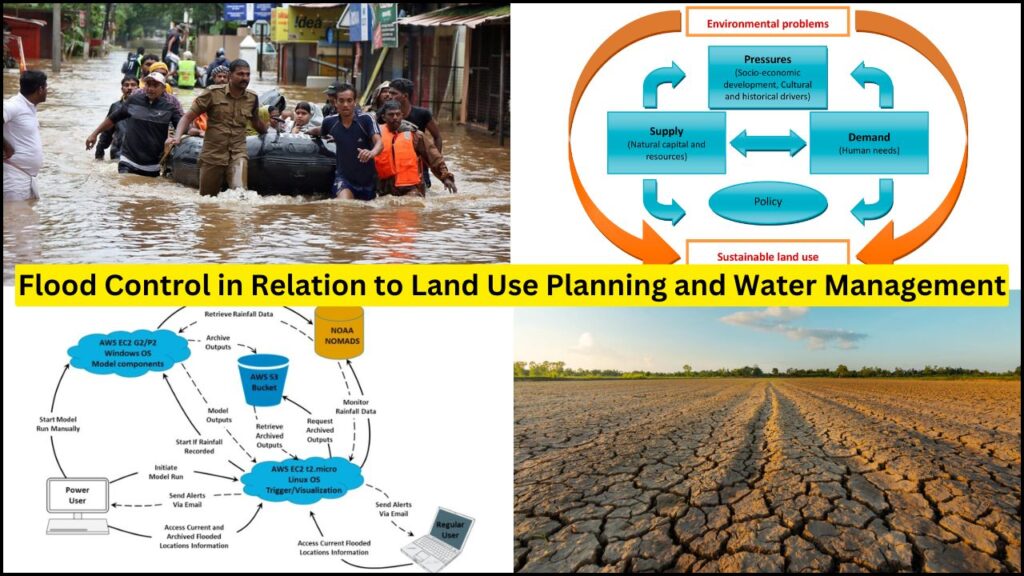
We all know the importance of water. The freshwater is going to be reduced day by day. We have plenty of water but it is not for drinking purposes such as the water is present in the form of snow and sea water. The sources of freshwater are limited like rain, groundwater, and rivers. Now, we will discuss the issues of flood and drought. How to manage these conditions.
Floods and drought
Floods and drought are common problems that need to be handled properly. We can transfer the water of monsoon from high moonson areas to drought areas. The flood water can be used as an additional irrigational source and can be used for the generation of hydropower.
Floods in India
Floods are common in India and they are impacted by climate and rainfall patterns. At the same time, there are some areas where flooding is and at other locations, people are suffering from a lack of water. Floods result in damage to nature and trees. One reason for the flood is the low capacity of rivers to hold the rainfall water and then the water comes to the cities.
Damage from floods
Floods are considered disasters, they cause loss of life, damage to properties, and spread of disease, and the availability of essential commodities becomes difficult in flood areas. People who are living in flood-prone areas live their lives in fear. People suffer heavy losses due to floods, and the people in need lack medicine during the flood area.
Drought
An area suffers drought conditions when rainfall, moisture, and climate are not as usual. If the drought condition is long-lasting from year to year, the quality of the soil is degraded permanently and the people suffer the loss of food. You hardly see any plants in the drought area. Drought affects animal habitats too. During the drought in 1917-18, the Jhelum River in Kashmir dried completely. India also faced drought conditions in 2002.
Water-resources development in India
India is expecting its population to be 1.6 billion by the end of 2050. To fulfill the demand for food for this big population, India needed 450 million tonnes of food grain annually. Now, the stress is on water use, water is needed for agriculture, industry use, urban population, ecological management, and other tasks. We need long-term planning as already resources of water are already degraded, and many aquifers are depleted. We can create a balance between flood and drought to mitigate the effects of water scarcity.
National water policy
National Water Policy was implemented in 2002. The policy has highlighted the methods for planning for surface and groundwater. It also includes irrigation and flood control. In irrigation, proper irrigation techniques must be applied by utilizing all possible methods of water supply. Water should be used efficiently. The govt should look for the water allocation method and these should be allocated with social justice & equity.
Irrigation developments and protection against droughts
The Indian economy largely depends on agriculture. The govt is running many river valley projects. on the term plan of 5 years. The govt can not prevent the occurrence of droughts but govt can have several measures that can be used to tackle the drought conditions. The govt is focusing on reducing the water demand. To handle the drought conditions, there is a need to integrate science and technology with policy. The involvement of the public in the initiative can give better output.
Approach to drought management
We can follow the following approach to manage the drought conditions.
- We can issue early warnings
- We should look for an early response
- We need to build an efficient intelligence system
- Irrigation system demands maintenance on a timely basis
- We can make the availability of adequate foodstuff before the condition arrives
- We can maintain alternative drinking water sources for the drought area
- We can go to the construction of deep wells and bore wells
Approach to flood management
We can follow the following approach to manage the flood conditions.
- We can try to adjust the flood
- We can try to adjust the susceptibility to flood damage
- We can try to adjust the loss burden
- We can try to bear the loss together
Structural measures
We can adopt the below given structural measures for flood protection.
- We can build embankments, flood walls, and sea walls
- We can build dams and reservoirs where the flood possibility is high
- There should be natural detention basins
- The flood channel can be improved
- The drainage system needs improvement
- A possible solution is the diversion of floodwater
Non-structural measures
We can adopt the below given non-structural measures for flood protection.
- Flood forecasting and warning can help people escape
- We can do the zoning of the areas like Floodplain zoning
- Proper steps can be taken for flood fighting
- People can opt the floodproofing methods to protect them from flood
- The people can go for Flood Insurance
Flood forecasting and warning network in India
If flood forecasting can be done earlier, the govt can give warning to the people and they can do the evacuation process early. In the forecast process, the level of the river is checked. The flood water can be diverted to another area rather than to the cities. Central Water Commission has developed a nationwide flood forecasting and warning system.
FAQ
What is the flood control program in India?
Central govt and state govt take proper steps to combat the challenges of flood.
What are the steps taken by the government to control floods in India?
- Construction of Dams
- Construction of Reservoirs
- Shifting the excess water to canals
- Surplus water can be utilized for groundwater replenishment.